#guadalupana restaurant
Text
Más de mil peregrinaciones a la Guadalupana esperan en Tuxtla
El uso de cubrebocas será obligatoria para asistir al docenario de la virgen de Guadalupe en Tuxtla Gutiérrez; autoridades de tránsito advierten que no podrán garantizar acompañamiento al total de peregrinaciones.
El uso de cubrebocas será obligatoria para asistir al docenario de la virgen de Guadalupe en Tuxtla Gutiérrez; autoridades de tránsito advierten que no podrán garantizar acompañamiento al total de peregrinaciones.
Con cubrebocas obligatorio, este 2022 se realizará el docenario a la virgen de Guadalupe en Tuxtla Gutiérrez, anticipó Juan Carlos Mendoza, párroco de la Iglesia de Guadalupe de Tuxtla…
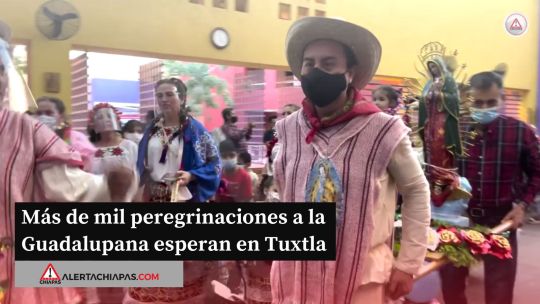
View On WordPress
#guadalupana chetumal#guadalupana cooperativa#guadalupana cosmetics#guadalupana farmacia#guadalupana houston#guadalupana letra#guadalupana mexicali#guadalupana mixco#guadalupana restaurant#guadalupana tahlequah ok
0 notes
Note
Hey! You're in houston right? Any favorite restaurants, museums, places to go?
Udipi cafe, mala Sichuan bistro (until isaw they absolutely bombed their last health inspection), tacos Tierra caliente, local foods, soul food vegan, green seed vegan, #1 chicken rice & seafood, xochi ($$$$), stack burger (Miss Kim is the fucking best 😭), Les Noodle, Pepperoni's (i think the Montrose location is owned separately and that's the one I would go to), Thai Pepper, Hobbit cafe, the chocolate bar, Luigi's pizzeria, Avenida Brazil, chapultepec lupita, campesino coffee house, la guadalupana, El Bolillo bakery, PAULIE'S ON WESTHEIMER (the fucking al'amatraciana ohhohohooohhhh 😭😭😭😭), milk + sugar, snooze, the breakfast klub OF COURSE, weights + measures, bambolino's.
I could think of more restaurants but I'll finish with cool places later!
7 notes
·
View notes
Text
Repost from @whereslupita - Lupita means migration. The Latinx population boom of the early XXI Century took Lupita to remote locations, like Jackson Hole, Wyoming.
Migrants from Tlaxcala, México, have found a home and plenty of work in this ski resort nestled in the Teton Mountain Range.
During a quick visit, we found Lupita and good tacos -made with handmade tortillas!- apart from other signs pointing to the presence of the Mexican community.
This stained glass welcomes visitors when they walk into Our Lady of the Mountains church. A timeline in the lobby shows important moments in the congregation’s history that speak, through Catholic devotion, of the growth of the Tlaxcalan presence in this corner of the Mountain West.
There are several Mexican restaurants and tiendas around town. Following the suggestion from our local friend Darlene, we headed to El Metate, a pretty popular spot with a full menu.
The place was busy with mostly men who were in their lunch break from work. An altar to Lupita stands in a nook by the benches in the waiting area. It was just fitting to get tacos with handmade tortillas since, to the best of our knowledge, the Náhuatl name Tlaxcallān means “The place of corn tortillas.” We had asada, pastor and chorizo tacos. They were very yummy!
2 Abril 2021
#whereslupita #dóndeandalupita #virgencita #virgendeguadalupe #guadalupe #guadalupana #laguadalupana #virgenmorena #ohmyguad #inguadwetrust #guad #lupe #lupita #dailylupita #virgenes #tonantzin #milupita #madresanta #wyoming #jacksonhole #migration #immigration #migración #tlaxcala #stainedglass #vitral #tacos 📸: @whereslupita

0 notes
Text
Novelist Bryan Washington on Writing—and Snacking—During the Pandemic
New Post has been published on https://foodloverrecipes.com/blog/novelist-bryan-washington-on-writing-and-snacking-during-the-pandemic/
Novelist Bryan Washington on Writing—and Snacking—During the Pandemic

BW: I didn't really set out to turn stereotypes on their head because I feel like if you're writing life as it's actually lived, it's not one in which you're working stereotypes and archetypes. Houston is a really deeply diverse city. So it is not shocking or strange to have a narrative where you have Black folks, and you have Asian American folks, Latinx folks, and everyone is in congress in the same narrative. There's a way in which publishing in this country can silo the diverse books and the anti-racist books into being the only ones with characters from marginalized communities. But that's just not true to life at all. So it was just about trying to write a story I'd want to read, featuring the kinds of stories I've been privy to and my friends have been privy to. And those are the kinds of stories, featuring many different kinds of people from many different places, I'm most interested in.
DD: So you wrote Lot, a collection of short stories, before Memorial and you got a lot of acclaim and attention for that. President Obama even named it as one of his favorite books of 2019. So what does that do to a writer's ego? And how do you, you know, stay focused on writing and going on to the next book without getting overwhelmed by the success?
BW: Yeah, I mean, I don't know that I think of it in terms of ego because I'm surprised any time someone reads whatever the f*#% I'm trying to do, like, that's always really shocking to me. It was certainly really lovely to hear that he read it, and to see it on that scale, but it's just as lovely when my friends say that they've taken time with the book, or when my students say it, or when my neighbors or folks out in the world say that they've taken time with it.
DD: Given the pandemic and lockdown I think we're all hoping that, you know, restaurants will be able to survive despite the possible next wave of infections. What's your feeling about the restaurants in Houston?
BW: It's hard to say a general feeling. But it's been really heartening to see the ways the community has come together to support those restaurants, whether it's through attending pop-ups or fundraisers or buying ready-to-eat packaged meals.
DD: Do you have a favorite restaurant there?
BW: I don't know if I have a favorite. But I have a few I've been to fairly recently. I guess I'll say Korean Noodle House, La Guadalupana, and My Baguettes are the places I've been going to quite often.
DD: What kind of tools would we see in your kitchen? My must-haves include a zester. I take a zester with me if I go to someone's apartment; I sneak a zester in my pocket.
BW: I mean, I feel like a zester is something that is now going to be essential. For me a mandoline is really essential because my knife skills are getting better, but they're not quite there and a mandoline just makes life so much easier. And also a donabe. If you're making shabu-shabu or hot pot, if you're making a really lovely bowl of rice, it's just super useful.
DD: Did you formally study Japanese food? Did you read cookbooks? Or is it just something that came from one thing leading to another? What would you say is your favorite dish from Osaka?
0 notes
Text
Frida Kahlo’s neighbourhood: exploring vibrant Coyoacán, Mexico City
Ahead of a major Frida Kahlo show at Londons V&A we visit the artists bohemian district from her house to the cantina where she drank, and from arts venues to fantastic markets and restaurants
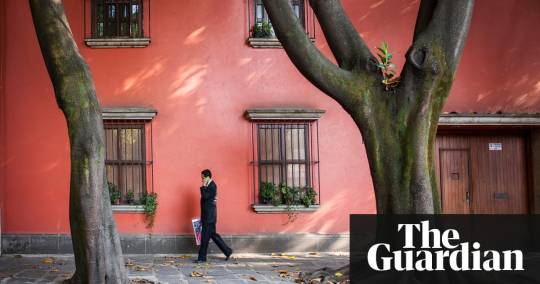
Coyoacán was once a hard-to-pronounce place, little known outside of Mexico City. Now it is an almost-obligatory destination for most visitors. Blame it on Frida Kahlo-mania. The artist’s birthplace and final residence, now the Museo Casa Azul, is here on a quiet residential street between similar still-private homes built around the turn of the 20th century. The folk art-filled museum, open as such since 1957, now draws queues that snake around the tree-lined block (advance online purchase of tickets is advisable). But this was not always the case.
Self-portrait with necklace by Frida Kahlo, 1933. Photograph: Daniel Leal-Olivas/AFP/Getty Images
On my first visit to this vast capital in 1978 as a student of art history, I wanted to visit the then little-known artist’s house. My guidebook didn’t mention it and my hotel concierge didn’t know of it – nor did the several taxi drivers I queried to help me find it. On that occasion I didn’t get there. And when I finally did, several years later, it was dusty and forgotten; I was the only visitor that day.
A short walk from the Casa Azul is the home where Leon Trotsky lived – and was killed with an ice-pick. The house has been preserved in detail: Trotsky’s bathrobe still hangs on the hook where he left it. It’s the area’s other big draw.
Museo Casa Azul, the Frida Kahlo Museum in Coyoacán. Photograph: Alamy
But it’s worth exploring the neighbourhood beyond these famous homes as there is much more to discover. Coyoacán’s main plaza, cobblestoned and plant-filled, is divided in halves, called Jardín Centenario and Jardín Hidalgo. They form a typical colonial Mexican town square, complete with benches for people-watching, gazebos for music and vendors selling balloons, toys and traditional sweets.
At the eastern side sits the church of San Juan Bautista, a highly gilded baroque affair. Across the plaza to the left of the church is the Casa de Cortés, a large yellow edifice, which occupies the site of Spanish conquistador Hernán Cortés’s 16th-century country home. Corazón de Maguey is an informal restaurant offering Oaxacan and other regional dishes. In the evenings it becomes more of a bar, with a large selection of mezcals. Outside seating affords a good view of the plaza.
Corazón de Maguey, Mexico
Frida and her husband Diego Rivera liked to knock back a tequila or 10 at Cantina La Guadalupana, which opened its doors in 1932. But unlike the equivalent Hemingway hangouts around the world, La Guadalupana has not become an overpriced tourist trap: it retains its old-fashioned working-class charm, bullfighting decor and good service. Free snacks are offered with drinks and there is a serviceable menu of Mexican dishes. The Mercado de Antojitos down the block, is a well known garage-like space; it’s open late and locals stop here for a rich pozole, the hominy-filled stew or a deep-fried quesadilla of cheese, squash blossom or chorizo.
Cantina La Guadalupana. Photograph: Alamy
Coyoacán’s market, a few blocks north (Calle Malintzin between Aguayo and Allende) is where Frida shopped, although the current structure was built in the 1950s, after her death. It still offers a colourful, folksy experience perfumed by flowers, fruits and bubbling pots of spicy mole sauce. In the middle of the market is the renowned Tostadas Coyoacán, with an abundant display of tostada toppings such as prawns, chicken, crab, and spicy pork, piled high and ready to be heaped on a crispy corn tortilla. Order one of the exotic fresh fruit drinks at the adjacent booth for a perfect Mexican lunch.
Heading west from the main plaza, Avenida Francisco Sosa is lined with spectacular colonial-era homes, such as the Italian Cultural Institute and the Casa de Cultura Jesús Reyes Heroles. Across the street is the leafy Plaza Santa Catarina, one of the loveliest spots in the city.
La Casa de los Tacos, Mexico
For a knockout taco experience, head to La Casa de los Tacos. The owners, Hector Ramos, a photographer who runs an art gallery upstairs, and Alejandro Escalante, author of the renowned Tacopedia, have created a thoroughly bohemian vibe. The tacos prehispánicos feature edible insects and are surprisingly delicious. For the less adventurous, there are grilled chicken, beef and pork tacos.
Mercadaroma, meanwhile, is Coyoacán’s answer to the gourmet street market craze. Dozens of stands offer multi-regional Mexican and international foods – and fusions of both – in a smartly designed three-storey building. Try the seafood tacos from the Pacific state of Sonora at Tetakawi or a torta (Mexico’s version of the sandwich), at La Barraca Valenciana.
Mercadoroma
Plaza de la Conchita, a few blocks east of the main plaza (walking down Higuera), is another peaceful park, whose church is one of the oldest in Mexico, dating to the mid-16th century. This architectural gem is a rare example of tequitqui style, which shows the influence of indigenous Indian craftsmen on Spanish baroque architectural ornament.
In addition to architecture-viewing and great eating, Coyoacán offers several other important cultural institutions. The Cineteca Nacional is Mexico’s central film institute, housed in a soaring modern complex where as many as 30 movies are shown on any given day. The Centro Cultural y Social Veracruzano is home to a theatre, shop and El Tajin one of the area’s best restaurants. Down the same road, at no. 134 is the largest branch of Gandhi, Mexico’s major bookseller.
A stroll around Coyoacán makes for a peaceful – and delicious – day out. And a snapshot of Frida’s Mexico.
More Frida-related attractions in Mexico City, and beyond
Diego Rivera and Frida Kahlo House-Studio Museum, San Angel, Mexico City
Photograph: Alamy
Designed by the couple’s friend, the architect and artist Juan O’Gorman, this was Kahlo and Rivera’s first proper marital home. It’s actually two houses joined by a bridge. They lived here from 1934 to 1939 and divorced in that year. Kahlo moved back to the Blue House and when she and Rivera remarried the following year, he moved to join her there, though he kept the San Angel house as his studio. Most interesting for visitors today is the bathroom in Frida’s quarters, which inspired one of her most famous works: What the Water Gave Me – it’s a meditation on her life and her history, as she lay in the tub.
• Admission £1.30, under 13s free, estudiodiegorivera.inba.gob.mx
Xochimilco and Museo Dolores Olmedo, Mexico City
Colourful boats at the Floating Gardens in Xochimilco. Photograph: Alamy
The floating gardens of Xochimilco have been Mexico City’s favourite way to spend a Sunday for many decades, as shown by the photographs of Kahlo trailing her hand into the water from her boat. It’s still the best place to soak up the vibrant, colourful and musical culture of the Mexico Kahlo loved. Rent a boat and be ferried through canals awash with mariachi bands, tortilla- and taco-makers, beer and tequila sellers. Afterwards head for the tranquillity of the Museo Dolores Olmedo Patino, a 17th-century mansion once owned by a friend and patron of Rivera’s. As well as many works by him it contains important paintings by Kahlo, although they’re on loan to an exhibition in Milan until the summer.
• Admission £3.75, free entry on Tuesdays, museodoloresolmedo.org.mx
Museo de Arte Moderno, Mexico City
Photograph: Francesca Yorke/Getty Images
Kahlo’s painting The Two Fridas features in the museum’s collection of 20th-century Mexican art. The museum is currently showing more than more than 200 works by British artist Leonora Carrington (until 23 September). Carrington arrived in Mexico City in 1942, and was based there until her death in 2011. She knew Kahlo and was friends with English millionaire Edward James, a patron of surrealist artists and creator of Las Pozas sculpture garden in the jungles of San Luis Potosí. The exhibition includes discoveries such as a colourful 22-piece set of tarot cards, intricate paintings and tapestries never shown before as well as her best-known works including her self-portrait borrowed from the Met, and her 1947 painting The Giantess.
• Admission £2.40, free on Sundays, museoartemoderno.com
Cuernavaca
Interior of the Robert Brady Museum. Photograph: Alamy
Soon after their first marriage (in 1929), Kahlo and Rivera went to live in Cuernavaca, around 90km south of Mexico City, borrowing the home of the US ambassador to Mexico where they lived while Rivera was painting murals in the town’s Palacio de Cortés. They depict the atrocities committed against the indigenous people, and the Mexican Revolution, and are a macro take on the world, in contrast to Kahlo’s micro take. The Robert Brady Museum is one of the best artistic highlights of the city and contains work by Kahlo and Rivera.
• Admission £1.80, museorobertbrady.com
Joanna Moorhead
from All Of Beer http://allofbeer.com/frida-kahlos-neighbourhood-exploring-vibrant-coyoacan-mexico-city/
from All of Beer https://allofbeercom.tumblr.com/post/184238359442
0 notes
Photo
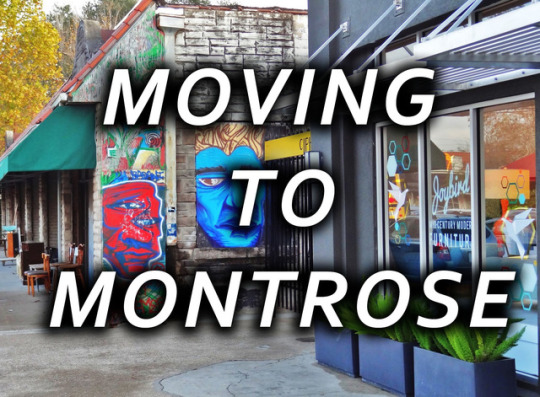
MOVING TO MONTROSE GUIDE
Montrose is one of my favorite neighborhoods in Houston. The walk-ability, atmosphere, art, and coffee shops always keep me coming back. If you’re moving to Montrose, here is a quick guide to navigating the neighborhood!
Montrose Apartment rentals:The Muse $
The Susanne $$
Hanover Montrose $$$
Everyday Living:
HEB
This San Antonio born grocery chain is a local favorite. Their carefully organized stores carry everything from apples to passion fruit*. But, aside from the traditional and less traditional assortment of foods, HEB sells a variety of beauty and health products (soaps, makeup, vitamin supplements, etc.).One of the reasons I use HEB for so many of my groceries, beyond proximity, is their commitment to the community they serve including giving a percentage of annual pretax profits to charity, sponsoring local educators, and supporting non-profits. Also, their guac is amazing!
Timberline Fitness Studio
Timberline offers an assortment of training styles from one-on-one with the gyms co-owner, Dean, to Pilates, yoga, or following your own routine. The trainers work at your level to improve technique, strength, and overall health and work to introduce those who are new to the fitness world while challenging their more experienced members. It has a comfortable, friendly atmosphere of comradery but, not one so social that it might disturb a good workout!
Agora Coffee
Enjoy a variety of tea’s, coffee, and pastries at the ever popular greek themed coffee shop!
Breakfast: La Guadalupana
Easy to overlook, La Guadalupana is a small, cheerful eatery slightly off the beaten path. They serve a traditional Mexican breakfast and handcraft their pastries. It’s delicious. If you’re in a hurry it’s well worth it to stop in and order a quick cup of coffee (flavored with a touch of cinnamon) and something out of their pastry case. But, for those who have the time? I recommend sitting down, relaxing, and taking in the homey atmosphere.
Lunch: Niko-Niko’s
In the restaurant business longevity and popularity are some of the most telling marks of success. Niko Niko’s was founded in 1977 as a single stand with picnic tables they had to chain down at night. In 40 years of hard-work, consistency, and dedication they build up the restaurant you see today.One of my favorite things at Niko Niko’s are the gyro sandwiches which are wonderfully savory and carefully spiced for the best flavor. I think the only notable complaint I have is that because of its popularity parking and hearing can be difficult.
Dinner: El Real
El Real is a large, open restaurant. They project old westerns against one of the walls, a nod to the building’s former use as a movie theater. My go-to at El Real are their San Antonio Puffy Tacos. The staff members are extraordinary and work so hard to provide the best experience. For those living in Montrose, they host a weekly Montrose Monday where all food is 50% off with proof of residence!I hope this Moving to Montrose guide helps make your transition to one of Houston’s best neighborhoods a breeze!
Blog: http://fancyhoustonapartments.com/
Free Houston Apartment Finding: http://fancyhoustonapartments.com/free-houston-apartment-finding/
Instagram: https://www.instagram.com/fancyhoustonapartments/
Facebook: https://www.facebook.com/FancyHoustonApartments
Tumblr: http://fancyhoustonapartments.tumblr.com/
3 notes
·
View notes
Quote
Memphis Brunch! We’re obsessed with it! Here is a big list of where to get brunch in Memphis, Germantown, and more in the Mid-South.
Updated August 2020. All hours, menus, and availability subject to frequent change because of coronavirus, so call ahead!
Downtown Memphis Brunch
3rd and Court Diner* – dine-in, takeout
The Arcade* – dine-in, delivery, takeout, patio seating
Automatic Slim’s – dine-in, takeout, small patio
Alcenia’s byob – takeout only, call ahead for hours (901-523-0200)
Aldo’s Pizza Pies* – downtown delivery, takeout, curbside, patio
Bardog Tavern – downtown, delivery, takeout, dine-in
Barware – temporarily closed
Bedrock Eats & Sweets byob – dine-in, takeout, take-and-bake, patio
Bleu – temporarily closed
Blind Bear – temporarily closed
Brass Door- temporarily closed
Capriccio Grill in the Peabody – dine-in, takeout, delivery via the apps
Carolina Watershed – temporarily closed
Catherine & Mary’s – dine-in (make reservations), to-go, and takeout Hog & Hominy pizza kits
Corner Bar at the Peabody – temporarily closed
Curry & Jerk – dine-in (make reservations) or takeout
Ghost River + Flying Sobie’s – Ghost River is curbside pickup beer only and Flying Sobie’s is at various locations
Huey’s* – dine-in, takeout
Hustle & Dough (ARRIVE Hotel)* – dine-in, takeout, patio
King & Union in the Doubletree Hotel – dine-in, takeout
Kooky Canuck* – dine-in, takeout
Local Gastropub – dine-in, takeout, delivery via the apps
Loflin Yard – dine-in, takeout
Luna at Hotel Napoleon – temporarily closed
Majestic Grille – temporarily closed, Cocozza open for dinner only in that location
Moma’s Bar – temporarily closed
Paulette’s – dine-in, takeout, delivery
Pontotoc – temporarily closed
Rizzo’s by Chef Michael Patrick – dine in, to-go, patio
Sage – temporarily closed
Slider Inn Downtown – patio, takeout, dine-in
South of Beale – dine in, takeout
Puck Food Hall – dine-in, takeout
Tamp & Tap – temporarily closed
Texas de Brazil – takeout
Tug’s on Mud Island – dine-in, takeout
The Vault – dine-in, takeout
Medical District / The Edge / Victorian Village / Crosstown Brunch Memphis
Edge Alley – dine in, takeout, patio
Mardi Gras Memphis*- dine in, takeout
Sunrise Memphis (Monday brunch, too) – takeout, delivery
Midtown Brunch Memphis
Alchemy – temporarily closed
Aldo’s Pizza Pies* – takeout, dine-in, patio, nearby delivery
Babalu Tacos and Tapas – dine-in, takeout, patio
The Bayou – dine-in, takeout, patio
Beauty Shop – dine-in (reservations), takeout, patio
Blue Monkey – temporarily closed
Bosco’s – dine-in, curbside, patio
Cafe Eclectic Midtown byob – dine-in, takeout, delivery, patio
Celtic Crossing – dine-in, takeout, patio
ECCO on Overton Park – they’re open, but not serving brunch at this time
Huey’s*- dine-in, curbside, patio
Lafayette’s Memphis – dine-in, takeout, patio
LBOE*- dine-in, carryout, curbside
Local on the Square – dine-in, takeout, patio
Railgarten – dine-in, takeout, patio
Robata Ramen and Yakitori Bar – dine-in, takeout patio
The Second Line – dine-in, takeout, patio
Side Street Grill – dine-in, takeout, patio
Slider Inn Midtown – takeout, dine-in, patio
Sweet Grass – dine-in, takeout, patio
Broad Avenue / University District Brunch Memphis
The Bluff – dine-in, takeout
Brother Juniper’s byob dine-in, takeout
Bounty on Broad – dine-in (reservations), takeout, patio
Char– dine-in (reservations), takeout
The Liquor Store – takeout, delivery, patio
Maximo’s on Broad – dine-in, takeout
R.P. Tracks – dine-in, takeout, curbside
East Memphis Brunch
Amerigo Italian Restaurant – dine-in, takeout, delivery
Another Broken Egg – takeout, dine-in, online ordering for pickup
Babalu Tacos and Tapas – dine-in, takeout
Bogie’s Deli Brookhaven Circle – dine-in, takeout,patio
The Bagel – takeout
Curry Bowl**** – weekend buffet is currently unavailable, but online ordering for curbside pickup is
East End Grill– dine-in, takeout (both Winchester and Hwy 64 locations)
Elwood’s Shack byob – dine-in, takeout, specials via Facebook
Half Shell – dine in, takeout, patio
Hog and Hominy – closed due to fire; will reopen in the future
Magnolia & May – dine-in, patio, takeout
Mahogany Memphis – dine-in (reservations), order online for takeout
Libro at Laurelwood (inside Novel bookstore) – dine-in, takeout
Owen Brennan’s – dine-in, takeout, curbside/online ordering
Staks Pancakes – dine-in, takeout, nearby delivery
Taqueria Guadalupana (they have beer, otherwise byob)
The Waffle Iron – temporarily closed, online store with waffle mixes is open
Venice Kitchen – dine-in, takeout
Brunch In Germantown, Cordova, and Collierville
Blue Honey Bistro (Germantown) – open for dinner only, so no brunch
Let It Fly Sports Bar (Germantown) – dine-in, takeout, curbside
Staks Pancakes (Germantown) – dine-in, takeout, delivery
Kooky Canuck (Cordova) – dine-in, takeout, delivery
Mellow Mushroom (Germantown) – dine-in, takeout
The Skybox (Collierville) – dine-in, takeout
Stoney River (Germantown) – dine-in (reservations), online ordering for pickup
Pearl’s Oyster House (Cordova) – dine-in, takeout
Rock ‘n’ Dough (Germantown) – dine-in, takeout
Raven + Lily (Collierville) – dine-in, takeout
I’d love to add more restaurants in the suburbs that have a dedicated brunch menu – open to suggestions!
* – no special brunch menu, but still perhaps a good place to eat on Sat. and Sun late breakfast/midday
**** – Curry Bowl doesn’t have booze or BYOB, but they do have an Indian buffet starting at 11 a.m. on Saturday and Sunday and that sounds so delightful that I’m just adding it to this list. S/o to the reader who sent this suggestion!
If I “left something off”, I promise I didn’t do it to offend you. Just leave a comment and I’ll get it added. #TheMoreTheMerrier
Spots like Blue Plate Cafe, Brother Juniper’s, Bryant’s Breakfast, Pancake Shop are more in the breakfast category but folks still love to eat there for brunch. Just FYI!
Are you a home owner in Memphis, with a broken garage door? Call ASAP garage door today at 901-461-0385 or checkout https://ift.tt/1B5z3Pc
https://ilovememphisblog.com/2020/08/80-places-to-eat-brunch-in-memphis/
0 notes
Text
Memories Don’t Show the Present
This post is part of a series where YAB students at 826LA in Echo Park explored their memories of and connections to their neighborhood.
By Gabriela R.
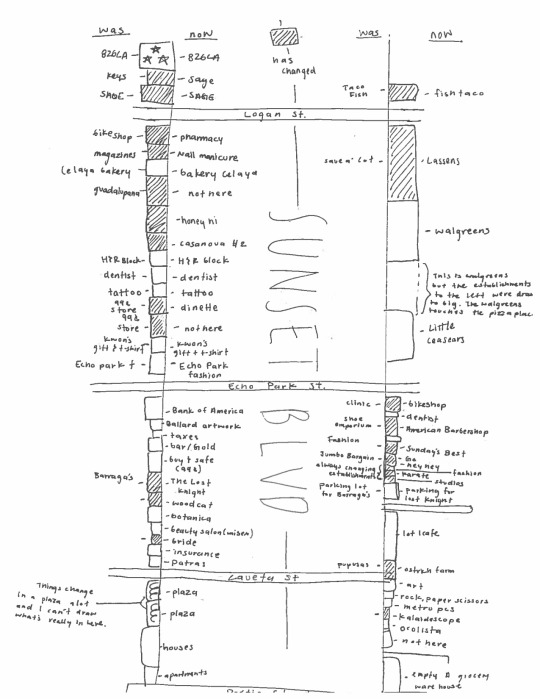
Since before I was even born, my mother and father have lived in the same small studio apartment in which my siblings and I now reside as well. My parents, from what I remember and have seen in countless photo albums, liked to go outside. We liked to wander and walk around, exploring new places and taking a lot of photos, and that has left us with a lot of memories. The neighborhood in which I grew up has been preserved in these photos, but unfortunately, memories don’t show the present. Home-y, local businesses that I loved to visit are gone—they were nothing special, just a constant in my life I didn’t realize I would miss.
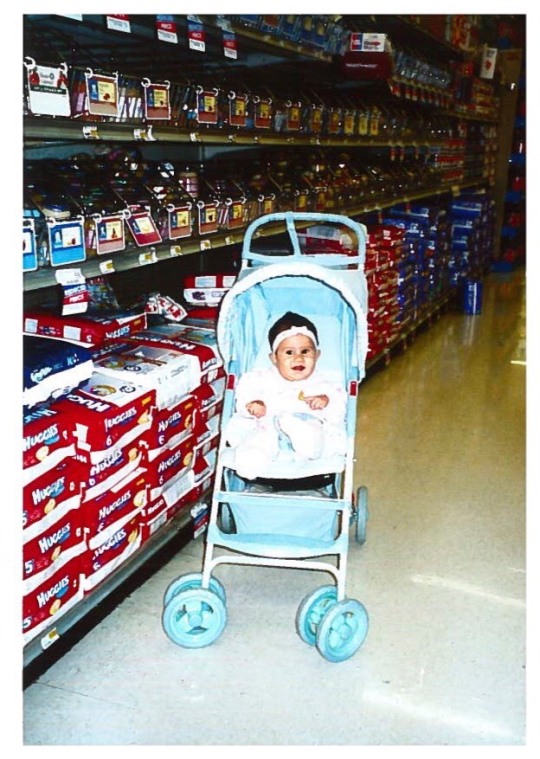
For example, there was once three 99 Cents Only Stores in this neighborhood. If I ever needed something and it wasn’t in one store, I would visit another; now, I’m screwed. Just knowing they aren’t there anymore, even if I never went inside the store/restaurant, hurts. I never believed they would really leave, but that in a few years I would come back and see the same shops.

Echo Park, the playground, for instance, was my favorite place as a kid. It had sand, cool slides and my all time favorite-swings. Then the park was remodeled, leaving me with sad turf and real little-kid playground, the ones that are so child-proof it hurts my heart, even though it can’t hurt my knees. There are some things that have stayed the same (very few things, but hey, at least not everything is entirely gone), like the Buy and Save, which in reality is really just a knock-off 99 Cents Only Store. It has a toy car at the front, where you can pop in a quarter and boom, instant fun. It’s been replaced, but there still is one.
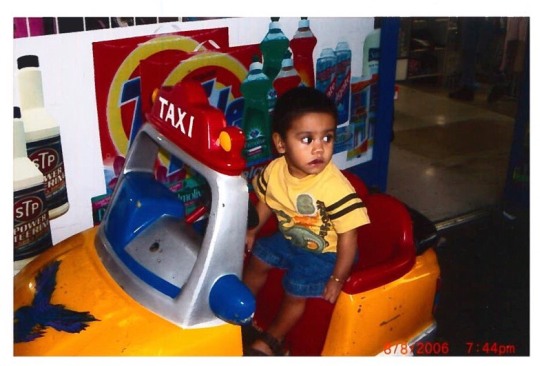
Another thing that I simply must mention is, La Guadalupana. La Guadalupana was a supermarket were we would buy our groceries. It was the nearest one to our home and sometimes we would stop by for cheap popsicles after school. I learned how to buy groceries there. It’s closed now, and has yet to be replaced. I personally hope that they will revive once more and bring back their slightly-expensive food and the best queso fresco. Obviously, things have now changed and, ya I miss them, duh. They weren’t overly expensive coffee shops, but I hope that at least nice places will pop up that don’t destroy the very present Latino culture.
0 notes
Photo

#whereslupita: "Victor Reséndiz Apolonio works a full-time job and then helps out at his family's Mexican restaurant, Azteca Grill, in Durham. The Lakewood neighborhood is rapidly changing and the family hopes their business remains a strong center of community amid its growth." #Repost @thisfeedsme with @repostapp #guadalupe #guadalupana #virgendeguadalupe #dóndeandalupita #durham #theothermexico #reflection #elotromexico (at Azteca Mexican)
#guadalupe#repost#virgendeguadalupe#reflection#whereslupita#dóndeandalupita#theothermexico#durham#guadalupana#elotromexico
0 notes
Text
Novelist Bryan Washington on Writing—and Snacking—During the Pandemic
New Post has been published on https://foodloverrecipes.com/blog/novelist-bryan-washington-on-writing-and-snacking-during-the-pandemic/
Novelist Bryan Washington on Writing—and Snacking—During the Pandemic
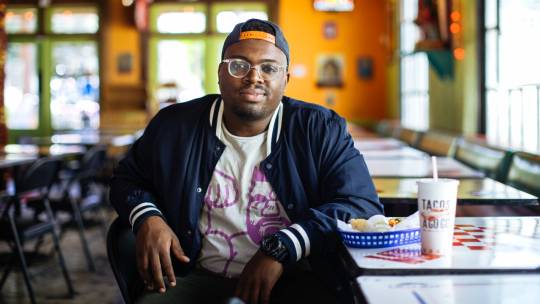
BW: I didn't really set out to turn stereotypes on their head because I feel like if you're writing life as it's actually lived, it's not one in which you're working stereotypes and archetypes. Houston is a really deeply diverse city. So it is not shocking or strange to have a narrative where you have Black folks, and you have Asian American folks, Latinx folks, and everyone is in congress in the same narrative. There's a way in which publishing in this country can silo the diverse books and the anti-racist books into being the only ones with characters from marginalized communities. But that's just not true to life at all. So it was just about trying to write a story I'd want to read, featuring the kinds of stories I've been privy to and my friends have been privy to. And those are the kinds of stories, featuring many different kinds of people from many different places, I'm most interested in.
DD: So you wrote Lot, a collection of short stories, before Memorial and you got a lot of acclaim and attention for that. President Obama even named it as one of his favorite books of 2019. So what does that do to a writer's ego? And how do you, you know, stay focused on writing and going on to the next book without getting overwhelmed by the success?
BW: Yeah, I mean, I don't know that I think of it in terms of ego because I'm surprised any time someone reads whatever the f*#% I'm trying to do, like, that's always really shocking to me. It was certainly really lovely to hear that he read it, and to see it on that scale, but it's just as lovely when my friends say that they've taken time with the book, or when my students say it, or when my neighbors or folks out in the world say that they've taken time with it.
DD: Given the pandemic and lockdown I think we're all hoping that, you know, restaurants will be able to survive despite the possible next wave of infections. What's your feeling about the restaurants in Houston?
BW: It's hard to say a general feeling. But it's been really heartening to see the ways the community has come together to support those restaurants, whether it's through attending pop-ups or fundraisers or buying ready-to-eat packaged meals.
DD: Do you have a favorite restaurant there?
BW: I don't know if I have a favorite. But I have a few I've been to fairly recently. I guess I'll say Korean Noodle House, La Guadalupana, and My Baguettes are the places I've been going to quite often.
DD: What kind of tools would we see in your kitchen? My must-haves include a zester. I take a zester with me if I go to someone's apartment; I sneak a zester in my pocket.
BW: I mean, I feel like a zester is something that is now going to be essential. For me a mandoline is really essential because my knife skills are getting better, but they're not quite there and a mandoline just makes life so much easier. And also a donabe. If you're making shabu-shabu or hot pot, if you're making a really lovely bowl of rice, it's just super useful.
DD: Did you formally study Japanese food? Did you read cookbooks? Or is it just something that came from one thing leading to another? What would you say is your favorite dish from Osaka?
0 notes
Text
Novelist Bryan Washington on Writing—and Snacking—During the Pandemic
New Post has been published on https://foodloverrecipes.com/blog/novelist-bryan-washington-on-writing-and-snacking-during-the-pandemic/
Novelist Bryan Washington on Writing—and Snacking—During the Pandemic
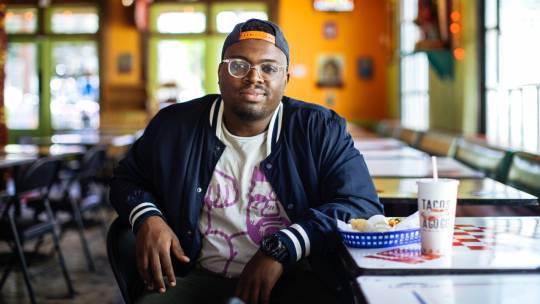
BW: I didn't really set out to turn stereotypes on their head because I feel like if you're writing life as it's actually lived, it's not one in which you're working stereotypes and archetypes. Houston is a really deeply diverse city. So it is not shocking or strange to have a narrative where you have Black folks, and you have Asian American folks, Latinx folks, and everyone is in congress in the same narrative. There's a way in which publishing in this country can silo the diverse books and the anti-racist books into being the only ones with characters from marginalized communities. But that's just not true to life at all. So it was just about trying to write a story I'd want to read, featuring the kinds of stories I've been privy to and my friends have been privy to. And those are the kinds of stories, featuring many different kinds of people from many different places, I'm most interested in.
DD: So you wrote Lot, a collection of short stories, before Memorial and you got a lot of acclaim and attention for that. President Obama even named it as one of his favorite books of 2019. So what does that do to a writer's ego? And how do you, you know, stay focused on writing and going on to the next book without getting overwhelmed by the success?
BW: Yeah, I mean, I don't know that I think of it in terms of ego because I'm surprised any time someone reads whatever the f*#% I'm trying to do, like, that's always really shocking to me. It was certainly really lovely to hear that he read it, and to see it on that scale, but it's just as lovely when my friends say that they've taken time with the book, or when my students say it, or when my neighbors or folks out in the world say that they've taken time with it.
DD: Given the pandemic and lockdown I think we're all hoping that, you know, restaurants will be able to survive despite the possible next wave of infections. What's your feeling about the restaurants in Houston?
BW: It's hard to say a general feeling. But it's been really heartening to see the ways the community has come together to support those restaurants, whether it's through attending pop-ups or fundraisers or buying ready-to-eat packaged meals.
DD: Do you have a favorite restaurant there?
BW: I don't know if I have a favorite. But I have a few I've been to fairly recently. I guess I'll say Korean Noodle House, La Guadalupana, and My Baguettes are the places I've been going to quite often.
DD: What kind of tools would we see in your kitchen? My must-haves include a zester. I take a zester with me if I go to someone's apartment; I sneak a zester in my pocket.
BW: I mean, I feel like a zester is something that is now going to be essential. For me a mandoline is really essential because my knife skills are getting better, but they're not quite there and a mandoline just makes life so much easier. And also a donabe. If you're making shabu-shabu or hot pot, if you're making a really lovely bowl of rice, it's just super useful.
DD: Did you formally study Japanese food? Did you read cookbooks? Or is it just something that came from one thing leading to another? What would you say is your favorite dish from Osaka?
0 notes
Text
Novelist Bryan Washington on Writing—and Snacking—During the Pandemic
New Post has been published on https://foodloverrecipes.com/blog/novelist-bryan-washington-on-writing-and-snacking-during-the-pandemic/
Novelist Bryan Washington on Writing—and Snacking—During the Pandemic
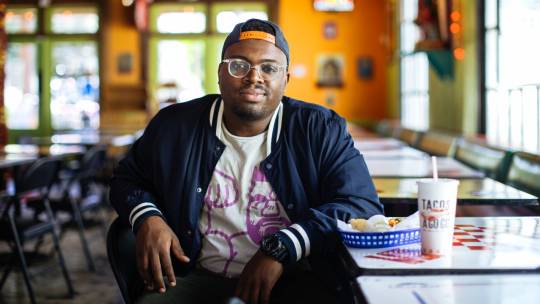
BW: I didn't really set out to turn stereotypes on their head because I feel like if you're writing life as it's actually lived, it's not one in which you're working stereotypes and archetypes. Houston is a really deeply diverse city. So it is not shocking or strange to have a narrative where you have Black folks, and you have Asian American folks, Latinx folks, and everyone is in congress in the same narrative. There's a way in which publishing in this country can silo the diverse books and the anti-racist books into being the only ones with characters from marginalized communities. But that's just not true to life at all. So it was just about trying to write a story I'd want to read, featuring the kinds of stories I've been privy to and my friends have been privy to. And those are the kinds of stories, featuring many different kinds of people from many different places, I'm most interested in.
DD: So you wrote Lot, a collection of short stories, before Memorial and you got a lot of acclaim and attention for that. President Obama even named it as one of his favorite books of 2019. So what does that do to a writer's ego? And how do you, you know, stay focused on writing and going on to the next book without getting overwhelmed by the success?
BW: Yeah, I mean, I don't know that I think of it in terms of ego because I'm surprised any time someone reads whatever the f*#% I'm trying to do, like, that's always really shocking to me. It was certainly really lovely to hear that he read it, and to see it on that scale, but it's just as lovely when my friends say that they've taken time with the book, or when my students say it, or when my neighbors or folks out in the world say that they've taken time with it.
DD: Given the pandemic and lockdown I think we're all hoping that, you know, restaurants will be able to survive despite the possible next wave of infections. What's your feeling about the restaurants in Houston?
BW: It's hard to say a general feeling. But it's been really heartening to see the ways the community has come together to support those restaurants, whether it's through attending pop-ups or fundraisers or buying ready-to-eat packaged meals.
DD: Do you have a favorite restaurant there?
BW: I don't know if I have a favorite. But I have a few I've been to fairly recently. I guess I'll say Korean Noodle House, La Guadalupana, and My Baguettes are the places I've been going to quite often.
DD: What kind of tools would we see in your kitchen? My must-haves include a zester. I take a zester with me if I go to someone's apartment; I sneak a zester in my pocket.
BW: I mean, I feel like a zester is something that is now going to be essential. For me a mandoline is really essential because my knife skills are getting better, but they're not quite there and a mandoline just makes life so much easier. And also a donabe. If you're making shabu-shabu or hot pot, if you're making a really lovely bowl of rice, it's just super useful.
DD: Did you formally study Japanese food? Did you read cookbooks? Or is it just something that came from one thing leading to another? What would you say is your favorite dish from Osaka?
0 notes
Text
Novelist Bryan Washington on Writing—and Snacking—During the Pandemic
New Post has been published on https://foodloverrecipes.com/blog/novelist-bryan-washington-on-writing-and-snacking-during-the-pandemic/
Novelist Bryan Washington on Writing—and Snacking—During the Pandemic
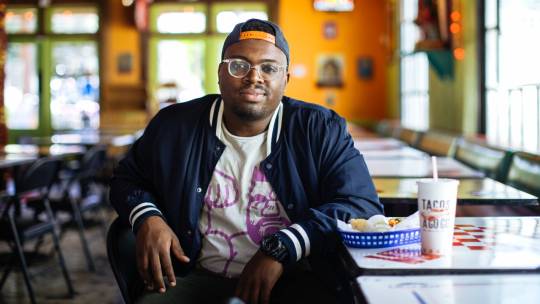
BW: I didn't really set out to turn stereotypes on their head because I feel like if you're writing life as it's actually lived, it's not one in which you're working stereotypes and archetypes. Houston is a really deeply diverse city. So it is not shocking or strange to have a narrative where you have Black folks, and you have Asian American folks, Latinx folks, and everyone is in congress in the same narrative. There's a way in which publishing in this country can silo the diverse books and the anti-racist books into being the only ones with characters from marginalized communities. But that's just not true to life at all. So it was just about trying to write a story I'd want to read, featuring the kinds of stories I've been privy to and my friends have been privy to. And those are the kinds of stories, featuring many different kinds of people from many different places, I'm most interested in.
DD: So you wrote Lot, a collection of short stories, before Memorial and you got a lot of acclaim and attention for that. President Obama even named it as one of his favorite books of 2019. So what does that do to a writer's ego? And how do you, you know, stay focused on writing and going on to the next book without getting overwhelmed by the success?
BW: Yeah, I mean, I don't know that I think of it in terms of ego because I'm surprised any time someone reads whatever the f*#% I'm trying to do, like, that's always really shocking to me. It was certainly really lovely to hear that he read it, and to see it on that scale, but it's just as lovely when my friends say that they've taken time with the book, or when my students say it, or when my neighbors or folks out in the world say that they've taken time with it.
DD: Given the pandemic and lockdown I think we're all hoping that, you know, restaurants will be able to survive despite the possible next wave of infections. What's your feeling about the restaurants in Houston?
BW: It's hard to say a general feeling. But it's been really heartening to see the ways the community has come together to support those restaurants, whether it's through attending pop-ups or fundraisers or buying ready-to-eat packaged meals.
DD: Do you have a favorite restaurant there?
BW: I don't know if I have a favorite. But I have a few I've been to fairly recently. I guess I'll say Korean Noodle House, La Guadalupana, and My Baguettes are the places I've been going to quite often.
DD: What kind of tools would we see in your kitchen? My must-haves include a zester. I take a zester with me if I go to someone's apartment; I sneak a zester in my pocket.
BW: I mean, I feel like a zester is something that is now going to be essential. For me a mandoline is really essential because my knife skills are getting better, but they're not quite there and a mandoline just makes life so much easier. And also a donabe. If you're making shabu-shabu or hot pot, if you're making a really lovely bowl of rice, it's just super useful.
DD: Did you formally study Japanese food? Did you read cookbooks? Or is it just something that came from one thing leading to another? What would you say is your favorite dish from Osaka?
0 notes
Text
Novelist Bryan Washington on Writing—and Snacking—During the Pandemic
New Post has been published on https://foodloverrecipes.com/blog/novelist-bryan-washington-on-writing-and-snacking-during-the-pandemic/
Novelist Bryan Washington on Writing—and Snacking—During the Pandemic

BW: I didn't really set out to turn stereotypes on their head because I feel like if you're writing life as it's actually lived, it's not one in which you're working stereotypes and archetypes. Houston is a really deeply diverse city. So it is not shocking or strange to have a narrative where you have Black folks, and you have Asian American folks, Latinx folks, and everyone is in congress in the same narrative. There's a way in which publishing in this country can silo the diverse books and the anti-racist books into being the only ones with characters from marginalized communities. But that's just not true to life at all. So it was just about trying to write a story I'd want to read, featuring the kinds of stories I've been privy to and my friends have been privy to. And those are the kinds of stories, featuring many different kinds of people from many different places, I'm most interested in.
DD: So you wrote Lot, a collection of short stories, before Memorial and you got a lot of acclaim and attention for that. President Obama even named it as one of his favorite books of 2019. So what does that do to a writer's ego? And how do you, you know, stay focused on writing and going on to the next book without getting overwhelmed by the success?
BW: Yeah, I mean, I don't know that I think of it in terms of ego because I'm surprised any time someone reads whatever the f*#% I'm trying to do, like, that's always really shocking to me. It was certainly really lovely to hear that he read it, and to see it on that scale, but it's just as lovely when my friends say that they've taken time with the book, or when my students say it, or when my neighbors or folks out in the world say that they've taken time with it.
DD: Given the pandemic and lockdown I think we're all hoping that, you know, restaurants will be able to survive despite the possible next wave of infections. What's your feeling about the restaurants in Houston?
BW: It's hard to say a general feeling. But it's been really heartening to see the ways the community has come together to support those restaurants, whether it's through attending pop-ups or fundraisers or buying ready-to-eat packaged meals.
DD: Do you have a favorite restaurant there?
BW: I don't know if I have a favorite. But I have a few I've been to fairly recently. I guess I'll say Korean Noodle House, La Guadalupana, and My Baguettes are the places I've been going to quite often.
DD: What kind of tools would we see in your kitchen? My must-haves include a zester. I take a zester with me if I go to someone's apartment; I sneak a zester in my pocket.
BW: I mean, I feel like a zester is something that is now going to be essential. For me a mandoline is really essential because my knife skills are getting better, but they're not quite there and a mandoline just makes life so much easier. And also a donabe. If you're making shabu-shabu or hot pot, if you're making a really lovely bowl of rice, it's just super useful.
DD: Did you formally study Japanese food? Did you read cookbooks? Or is it just something that came from one thing leading to another? What would you say is your favorite dish from Osaka?
0 notes
Text
Novelist Bryan Washington on Writing—and Snacking—During the Pandemic
New Post has been published on https://foodloverrecipes.com/blog/novelist-bryan-washington-on-writing-and-snacking-during-the-pandemic/
Novelist Bryan Washington on Writing—and Snacking—During the Pandemic
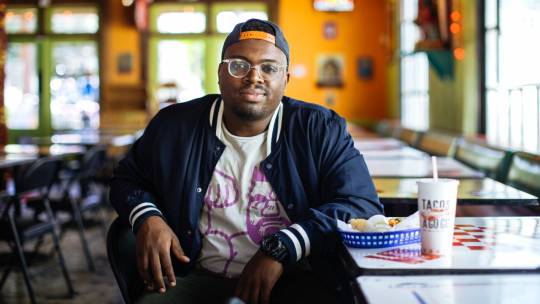
BW: I didn't really set out to turn stereotypes on their head because I feel like if you're writing life as it's actually lived, it's not one in which you're working stereotypes and archetypes. Houston is a really deeply diverse city. So it is not shocking or strange to have a narrative where you have Black folks, and you have Asian American folks, Latinx folks, and everyone is in congress in the same narrative. There's a way in which publishing in this country can silo the diverse books and the anti-racist books into being the only ones with characters from marginalized communities. But that's just not true to life at all. So it was just about trying to write a story I'd want to read, featuring the kinds of stories I've been privy to and my friends have been privy to. And those are the kinds of stories, featuring many different kinds of people from many different places, I'm most interested in.
DD: So you wrote Lot, a collection of short stories, before Memorial and you got a lot of acclaim and attention for that. President Obama even named it as one of his favorite books of 2019. So what does that do to a writer's ego? And how do you, you know, stay focused on writing and going on to the next book without getting overwhelmed by the success?
BW: Yeah, I mean, I don't know that I think of it in terms of ego because I'm surprised any time someone reads whatever the f*#% I'm trying to do, like, that's always really shocking to me. It was certainly really lovely to hear that he read it, and to see it on that scale, but it's just as lovely when my friends say that they've taken time with the book, or when my students say it, or when my neighbors or folks out in the world say that they've taken time with it.
DD: Given the pandemic and lockdown I think we're all hoping that, you know, restaurants will be able to survive despite the possible next wave of infections. What's your feeling about the restaurants in Houston?
BW: It's hard to say a general feeling. But it's been really heartening to see the ways the community has come together to support those restaurants, whether it's through attending pop-ups or fundraisers or buying ready-to-eat packaged meals.
DD: Do you have a favorite restaurant there?
BW: I don't know if I have a favorite. But I have a few I've been to fairly recently. I guess I'll say Korean Noodle House, La Guadalupana, and My Baguettes are the places I've been going to quite often.
DD: What kind of tools would we see in your kitchen? My must-haves include a zester. I take a zester with me if I go to someone's apartment; I sneak a zester in my pocket.
BW: I mean, I feel like a zester is something that is now going to be essential. For me a mandoline is really essential because my knife skills are getting better, but they're not quite there and a mandoline just makes life so much easier. And also a donabe. If you're making shabu-shabu or hot pot, if you're making a really lovely bowl of rice, it's just super useful.
DD: Did you formally study Japanese food? Did you read cookbooks? Or is it just something that came from one thing leading to another? What would you say is your favorite dish from Osaka?
0 notes
Text
Novelist Bryan Washington on Writing—and Snacking—During the Pandemic
New Post has been published on https://foodloverrecipes.com/blog/novelist-bryan-washington-on-writing-and-snacking-during-the-pandemic/
Novelist Bryan Washington on Writing—and Snacking—During the Pandemic
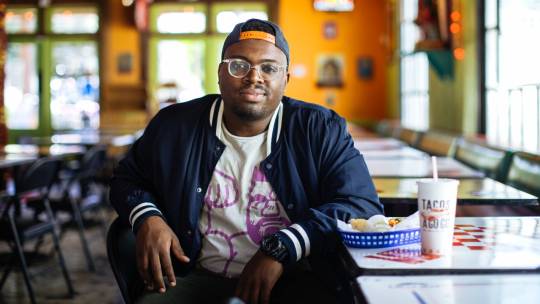
BW: I didn't really set out to turn stereotypes on their head because I feel like if you're writing life as it's actually lived, it's not one in which you're working stereotypes and archetypes. Houston is a really deeply diverse city. So it is not shocking or strange to have a narrative where you have Black folks, and you have Asian American folks, Latinx folks, and everyone is in congress in the same narrative. There's a way in which publishing in this country can silo the diverse books and the anti-racist books into being the only ones with characters from marginalized communities. But that's just not true to life at all. So it was just about trying to write a story I'd want to read, featuring the kinds of stories I've been privy to and my friends have been privy to. And those are the kinds of stories, featuring many different kinds of people from many different places, I'm most interested in.
DD: So you wrote Lot, a collection of short stories, before Memorial and you got a lot of acclaim and attention for that. President Obama even named it as one of his favorite books of 2019. So what does that do to a writer's ego? And how do you, you know, stay focused on writing and going on to the next book without getting overwhelmed by the success?
BW: Yeah, I mean, I don't know that I think of it in terms of ego because I'm surprised any time someone reads whatever the f*#% I'm trying to do, like, that's always really shocking to me. It was certainly really lovely to hear that he read it, and to see it on that scale, but it's just as lovely when my friends say that they've taken time with the book, or when my students say it, or when my neighbors or folks out in the world say that they've taken time with it.
DD: Given the pandemic and lockdown I think we're all hoping that, you know, restaurants will be able to survive despite the possible next wave of infections. What's your feeling about the restaurants in Houston?
BW: It's hard to say a general feeling. But it's been really heartening to see the ways the community has come together to support those restaurants, whether it's through attending pop-ups or fundraisers or buying ready-to-eat packaged meals.
DD: Do you have a favorite restaurant there?
BW: I don't know if I have a favorite. But I have a few I've been to fairly recently. I guess I'll say Korean Noodle House, La Guadalupana, and My Baguettes are the places I've been going to quite often.
DD: What kind of tools would we see in your kitchen? My must-haves include a zester. I take a zester with me if I go to someone's apartment; I sneak a zester in my pocket.
BW: I mean, I feel like a zester is something that is now going to be essential. For me a mandoline is really essential because my knife skills are getting better, but they're not quite there and a mandoline just makes life so much easier. And also a donabe. If you're making shabu-shabu or hot pot, if you're making a really lovely bowl of rice, it's just super useful.
DD: Did you formally study Japanese food? Did you read cookbooks? Or is it just something that came from one thing leading to another? What would you say is your favorite dish from Osaka?
0 notes